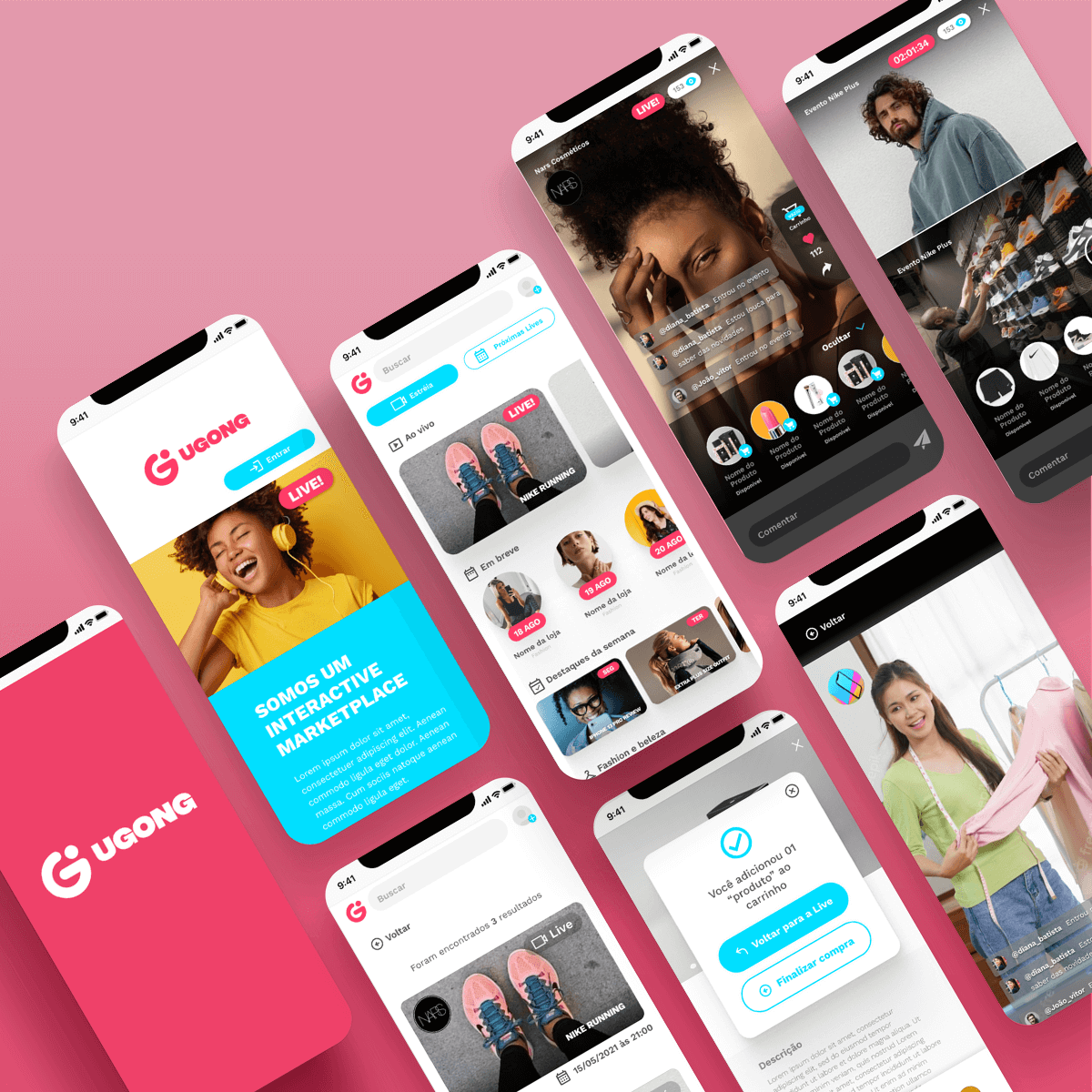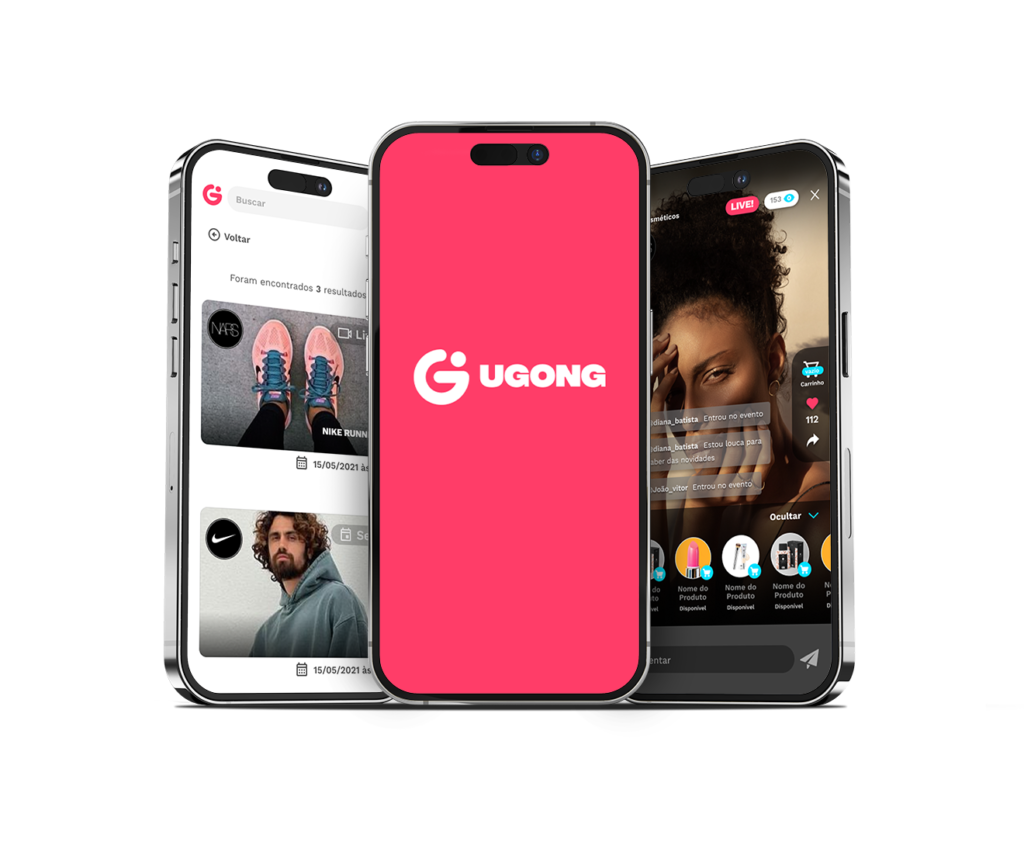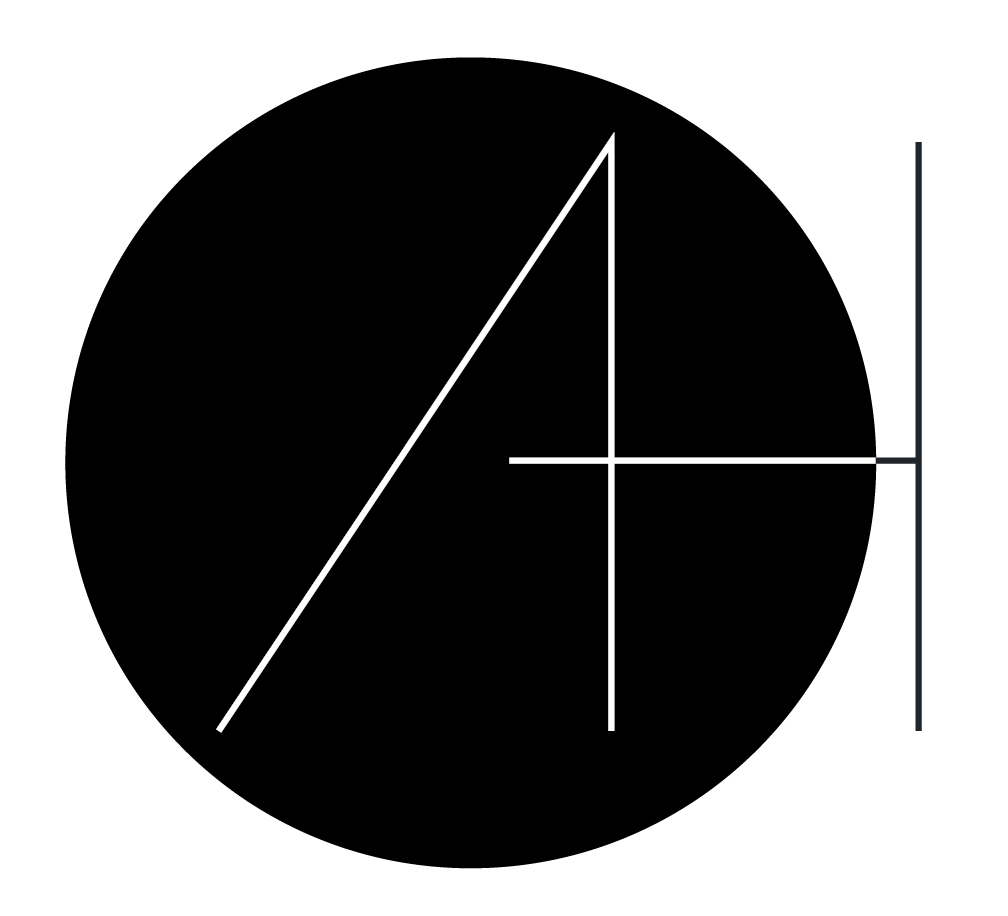Ugong
Project
Project: UI Redesign for a Live Commerce Startup Project

Goal
The “Ugong” project is a Live Commerce startup that has decided to invest in a significant User Interface (UI) overhaul. The challenge was to create an experience that not only meets but exceeds user expectations, propelling “Ugong” to new heights of usability.

- Planning and Strategy
Design process
Responsive Design
Ensuring a consistent experience across all devices, from desktops to mobile devices, the new design prioritizes accessibility and seamless adaptation.
Simplified Navigation
Optimizing information architecture, streamlining navigation to help users easily find desired products, promoting a smooth shopping journey.
Modern Aesthetics:
Introducing contemporary visual elements while maintaining the “Ugong” brand identity. Vibrant colors, readable typography, and intuitive icons were strategically incorporated to create a modern aesthetic.
Nielsen Heuristics
Applying Nielsen’s usability heuristics to assess the existing interface, identify heuristic violations, and areas for improvement.
Preliminary Analysis
Studied successful live commerce platforms and looked for standout details. Analyzed design trends, innovative features, and user engagement approaches.
User Testing
- Conducted qualitative and quantitative research using the tool without the changes to analyze the implementations to be applied.
- Recorded feedback, adjusted the design based on results, and repeated tests as needed.
Home page Before
Home page After
Image Accordion Content Goes Here! Click edit button to change this text.
Cart Page Before
Cart Page After
The initial modifications focused on the visual aspects, such as giving more prominence to the main Lives on the Home page. In the shopping cart, as well as throughout the entire application, various unnecessary screens and steps in navigation were adjusted. Icons were also implemented in all steps and buttons to ensure empathy and a clear understanding of users’ needs. These changes aim to create a more efficient and user-centric experience.
Incremental Iterations
The most significant change added after the research was the in-live shopping cart. Previously, when a customer clicked the buy button, they were redirected to the shopping cart to choose product details. After the modifications, an in-live shopping cart was implemented, allowing users to stay within the live stream without worrying about missing any products.
- Implementation of the Cart inside the Live
Monitoring
- Finalization of Developments and Results
- Implement the new design in controlled phases to monitor the impact on performance metrics.
- Conduct A/B testing to validate the effectiveness of the changes.
- Collect user feedback for future improvements.
- Complete and update documentation.
RESULTS:
The qualitative research revealed a significant increase in positive user feedback. Participants highlighted the ease of use, modern aesthetics, and overall greater satisfaction when navigating and making purchases.

